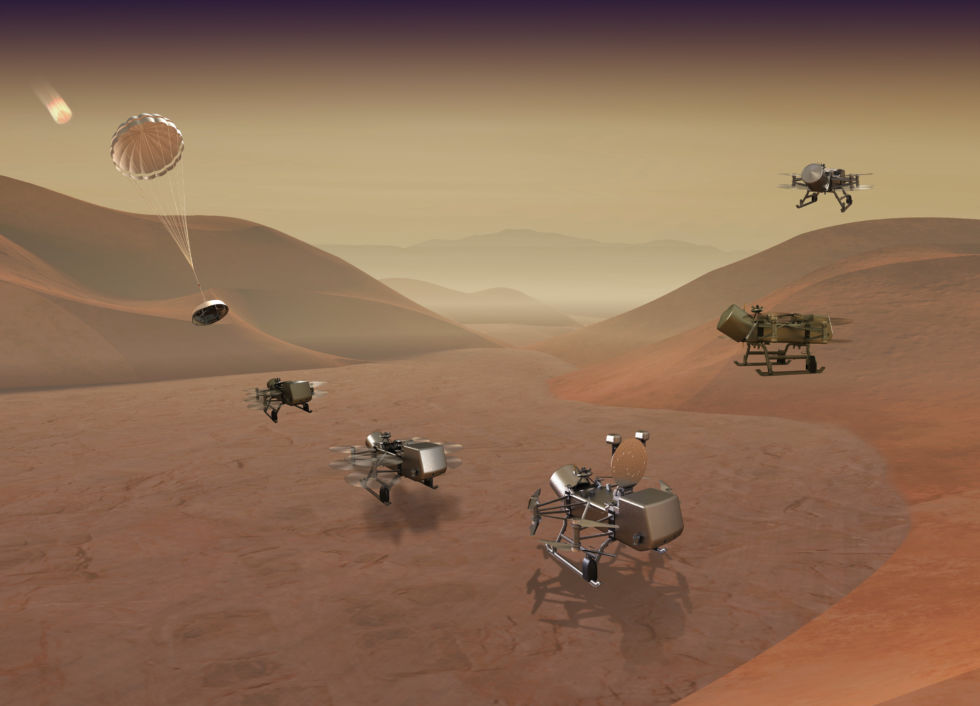NASA will fund a revolutionary mission to fly through Titan’s atmosphere

Mission concept of Dragon's entry, descent, landing, surface operations, and flight at Titan. [credit: Johns Hopkins APL ]
On Thursday, NASA announced its next medium-class mission to explore the Solar System-a lander named Dragonfly that will fly like a drone over the surface of Titan, Saturn's largest Moon. Titan has a fascinating environment, with a hydrocarbon atmosphere much thicker than Earth's atmosphere. NASA intends to spend a couple of years exploring its complex chemistry.
NASA scientists were deciding between this Titan explorer and another mission that would have flown to a comet named 67P/Churyumov-Gerasimenko. The comet had been visited previously by Europe's Rosetta spacecraft, but the new mission would have returned a sample of cometary material to Earth.
Of the two missions, the Titan explorer-with an unprecedented design that would fly a vehicle the size of a larger Mars rover over the moon-carried the higher risk. But, half a century after the Apollo lunar landings, NASA decided to go boldly. "A great nation does great things," said NASA Administrator Jim Bridenstine.
Read 8 remaining paragraphs | Comments